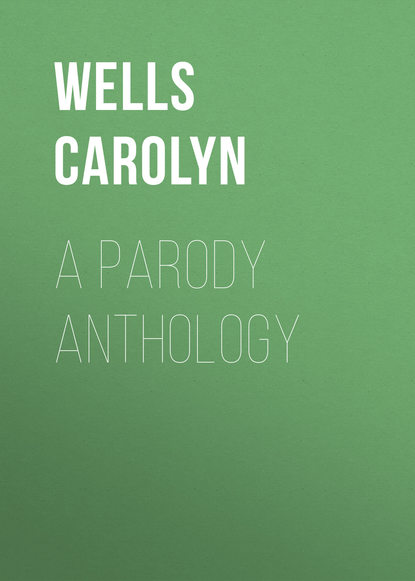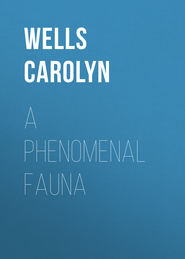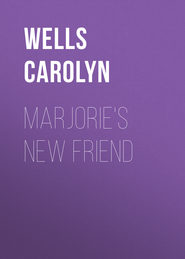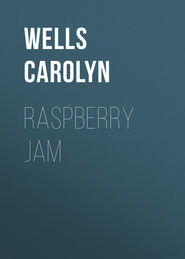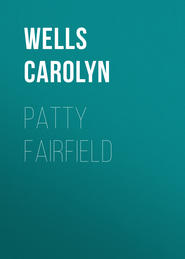По всем вопросам обращайтесь на: info@litportal.ru
(©) 2003-2024.
✖
A Parody Anthology
Настройки чтения
Размер шрифта
Высота строк
Поля
A Parody Anthology
Carolyn Wells
Carolyn Wells
A Parody Anthology
NOTE
Acknowledgment is hereby gratefully made to the publishers of the various parodies for permission to include them in this compilation.
The parodies from “Diversions of the Echo Club," by Bayard Taylor, and Mary and Her Lamb, from “New Waggings of Old Tales," by Frank Dempster Sherman, are published by permission of Messrs. Houghton, Mifflin & Company.
By the courtesy of John Lane are included the parodies of Anthony C. Deane, from his volume “New Rhymes for Old;" and those of Owen Seaman, from volumes “In Cap and Bells" and “The Battle of the Bays."
Bed During Exams is from “Cap and Gown," published by Messrs. L. C. Page & Company.
The Golfer's Rubaiyat, by H. C. Boynton, is from “A Book of American Humorous Verse," published by Messrs. Herbert S. Stone & Company.
Staccato to O Le Lupe is from “Last Scenes from Vagabondia," by Bliss Carman and Richard Hovey, published by Messrs. Small, Maynard & Company.
The two poems by Ben King are published by Forbes & Co.
The following are published by Charles Scribner's Sons: Song, from “The Book of Joyous Children," by James Whitcomb Riley; Home Sweet Home, and Imitation, from “Poems" of H. C. Bunner; and Song of a Heart, and Godiva, from “Overheard in a Garden," by Oliver Herford.
INTRODUCTION
PARODY AS A FINE ART
THE fact that parody has been ably defended by many of the world's best minds proves that it is an offensive measure, at least from some viewpoints. But an analysis of the arguments for and against seems to show that parody is a true and legitimate branch of art, whose appreciation depends upon the mental bias of the individual.
To enjoy parody, one must have an intense sense of the humorous and a humorous sense of the intense; and this, of course, presupposes a mental attitude of wide tolerance and liberal judgments.
Parodies are not for those who cannot understand that parody is not necessarily ridicule. Like most other forms of literature, unless the intent of the writer be thoroughly understood and appreciated, the work is of little value to the reader.
The defenders of parody have sometimes endeavored to prove that it has an instructive value, and that it has acted as a reforming influence against mannerisms and other glaring defects. One enthusiastic partisan confidently remarks: “It may gently admonish the best and most established writer, when, from haste, from carelessness, from over-confidence, he is in danger of forfeiting his reputation; it may gently lead the tyro, while there is yet time, from the wrong into the right path." But this ethical air-castle is rudely shattered by facts, for what established writer ever changed his characteristic effects as a result of the parodies upon his works, or what tyro was ever parodied?
It has been said, too, that a good parody makes us love the original work better; but this statement seems to lack satisfactory proof except, perhaps, on the principle that a good parody may lead us to know the original work more thoroughly.
Perhaps the farthest fetched argument of the zealous advocates of the moral virtues of parody is found in Lord Jeffrey's review of the well-known “Rejected Addresses," where he says, “The imitation lets us more completely into the secret of the original author, and enables us to understand far more clearly in what the peculiarity of his manner consists than most of us would ever have done without this assistance." If this be true at all, it is exemplified in very few instances, and is one of the least of the minor reasons for the existence of a parody.
The main intent of the vast majority of parodies is simply to amuse; but to amuse intelligently and cleverly. This aim is quite high enough, and is in no way strengthened or improved by the bolstering up qualities of avowed virtuous influences.
The requirements of the best parody are in a general way simply the requirements of the best literature of any sort; but, specifically, the true parodist requires an exact mental balance, a fine sense of proportion and relative values, good-humor, refinement, and unerring taste. Self-control and self-restraint are also needed; a parodist may go to the very edge, but he must not fall over.
The fact that poor parodies outnumber the good ones in the ratio of about ten to one (which is not an unusual percentage in any branch of literature), is because a wide and generous sense of humor is so rarely found in combination with the somewhat circumscribed quality of good taste. It is, therefore, on account of the abuse of parody, and not the use of it, that a defence of the art has been found necessary.
The parody has the sanction of antiquity, and though its absolute origin is uncertain, and various “Fathers of Parody" have been named, it is safe to assume that it began with the Greeks. The Romans, too, indulged in it, and its continuance has been traced all through the Middle Ages; but these ancient parodies, however acceptable in their time, are of little interest to us now, save as heirlooms. Their wit is coarse, their humor heavy; they are usually caustic and often irreverent.
In the seventeenth and eighteenth centuries the art of parody began to improve, and during the nineteenth it rose to a height that demanded recognition from the literary world.
It is interesting to note that the age of English parody was ushered in by such masterpieces as the “Rolliad" and the “Anti-Jacobin," followed by the “Rejected Addresses" and the “Bon Gaultier Ballads." Later came Thackeray, Calverley, Swinburne and Lewis Carroll, also Bayard Taylor, Bret Harte, and Phœbe Cary. More modern still is the work of Rudyard Kipling, Anthony C. Deane, H. C. Bunner, and Owen Seaman.
Though some of these are classed among the minor poets, they are all major parodists and approach their work armed at all points.
The casual critic of parodies, as a rule, divides them into two classes, which, though under various forms of terminology, resolve themselves into parodies of sound and parodies of sense. But there are really three great divisions, which may be called “word-rendering," “form-rendering," and “sense-rendering."
The first, mere word-rendering, is simply an imitation of the original, and depends for its interest entirely upon the substitution of a trivial or commonplace motive for a lofty one, and following as nearly as possible the original words.
Form-rendering is the imitation of the style of an author, preferably an author given to mannerisms or affectation of some sort. The third division, sense-rendering, is by far the most meritorious, and utilizes not only the original writer's diction and style, but follows a train of thought precisely along the lines that he would have pursued from the given premises.
This class of parody is seen at its best in Catherine Fanshawe's “Imitation of Wordsworth," and Calverley's “The Cock and the Bull."
But though parodies of this sort are of more serious worth, the other classes show examples quite as good in their own way.
Lewis Carroll's immortal parody of Southey's “Father William" is merely a burlesque of the word-rendering type, yet it is perfect of its kind and defies adverse criticism.
Miss Cary was a pioneer of parody in America and one of the few women writers who have done clever work of this sort. Miss Cary's parodies are numerous and uniformly first-class examples of their kind. They are collected in a small book, now out of print, and are well worth reading.
Of course, parodies which burlesque the actual words of the original are necessarily parodies of some particular poem, and often not so good an imitation of the style of the author.
More difficult than the parody of a particular poem is the imitation or burlesque of the literary style of an author. To accomplish this, the parodist must be himself a master of style, a student of language, and possessed of a power of mimicry with an instant appreciation of opportunities.
“Diversions of the Echo Club," by Bayard Taylor, are among the best of this class of parodies. Aside from their cleverness they are marked by good taste, fairness, justice, and a true poetic instinct.
Naturally, parodies of literary style are founded on the works of those authors whose individual characteristics invite imitation.
Parody is inevitable where sense is sacrificed to sound, where affectations of speech are evident, or where unwarrantable extravagance of any sort is indulged in. This explains the numerous (and usually worthless) parodies of Walt Whitman.
Swinburne and Browning are often parodied for these (perhaps only apparent) reasons, and the poets of the æsthetic school of course offered especially fine opportunities.
Parodies of Rossetti and his followers are often exceedingly funny, though not at all difficult to write, as the originals both in manner and matter fairly invite absurd incongruities.
Nursery Rhymes seem to find favor with the parodists as themes to work upon. A collection of Mother Goose's Melodies as they have been reset by clever pens, would be both large and interesting.
The masters of parody, however, are as a rule to be found among the master poets. Thackeray turned his genius to imitative account; Swinburne parodied himself as well as his fellow-poets; Rudyard Kipling has done some of the best parodies in the language, and C. S. Calverley's burlesques are classics. The work of these writers may be said to be in the third class; for not only do they preserve the diction and style of the author imitated, but they seem to go beyond that, and, assimilating for the moment his very mentality, caricature not only his expressed thoughts but his abstract cerebrations.
It is easy to understand how Swinburne with his facile fancy and wonderful command of words could be among the best parodists. In his “Heptalogia" are long and careful parodies of no less than seven prominent poets, each of which is a masterpiece, and the parody of Browning is especially good. Browning, of course, has always been a tempting mark for the parodists, but though it is easy to imitate his eccentricities superficially, it is only the greater minds that have parodied his subtler peculiarities. Among the best are Calverley's and Kipling's.
Kipling's parodies, written in his early days, and not often to be found in editions of his collected works, rank with the highest. His parody of Swinburne, while going to the very limit of legitimate imitation, is restrained by a powerful hand, and so kept within convincing bounds. The great fault with most parodies of Swinburne is that exaggeration is given play too freely, and the result is merely a meaningless mass of sound. Clever in a different way is Owen Seaman's parody of Swinburne. Mr. Seaman is one of the most brilliant of modern parodists and his parodies, though long, are perfect in all respects.
Among the most exquisite parodies we have ever read must be counted those of Anthony C. Deane, originally published in various London papers, and Calverley's works are too well known even to require mention.
The Rubaiyat of Omar Khayyam is often parodied, but rarely worthily. One reason for this lies in the fact that it is not Omar who is parodied at all, but Fitzgerald; consequently, the imitation is merely a form-rendering and more often only lines in the Rubaiyat metre.
Shakespeare, with the exception of one or two of his most hackneyed speeches, is rarely parodied; doubtless owing to the fact that his harmonious work shows no incongruities of matter or manner, and strikes no false notes for the parodists to catch at.
The extent of the domain of parody is vastly larger than is imagined by the average reader, and its already published bibliographies show thousands of collected parodies of varying degrees of merit.
Of all the poets Tennyson has probably been parodied the most; followed closely in this respect by Edgar Allan Poe. After these, Browning, Swinburne, and Walt Whitman; then Moore, Wordsworth, Longfellow, and Thomas Campbell.
Carolyn Wells
Carolyn Wells
A Parody Anthology
NOTE
Acknowledgment is hereby gratefully made to the publishers of the various parodies for permission to include them in this compilation.
The parodies from “Diversions of the Echo Club," by Bayard Taylor, and Mary and Her Lamb, from “New Waggings of Old Tales," by Frank Dempster Sherman, are published by permission of Messrs. Houghton, Mifflin & Company.
By the courtesy of John Lane are included the parodies of Anthony C. Deane, from his volume “New Rhymes for Old;" and those of Owen Seaman, from volumes “In Cap and Bells" and “The Battle of the Bays."
Bed During Exams is from “Cap and Gown," published by Messrs. L. C. Page & Company.
The Golfer's Rubaiyat, by H. C. Boynton, is from “A Book of American Humorous Verse," published by Messrs. Herbert S. Stone & Company.
Staccato to O Le Lupe is from “Last Scenes from Vagabondia," by Bliss Carman and Richard Hovey, published by Messrs. Small, Maynard & Company.
The two poems by Ben King are published by Forbes & Co.
The following are published by Charles Scribner's Sons: Song, from “The Book of Joyous Children," by James Whitcomb Riley; Home Sweet Home, and Imitation, from “Poems" of H. C. Bunner; and Song of a Heart, and Godiva, from “Overheard in a Garden," by Oliver Herford.
INTRODUCTION
PARODY AS A FINE ART
THE fact that parody has been ably defended by many of the world's best minds proves that it is an offensive measure, at least from some viewpoints. But an analysis of the arguments for and against seems to show that parody is a true and legitimate branch of art, whose appreciation depends upon the mental bias of the individual.
To enjoy parody, one must have an intense sense of the humorous and a humorous sense of the intense; and this, of course, presupposes a mental attitude of wide tolerance and liberal judgments.
Parodies are not for those who cannot understand that parody is not necessarily ridicule. Like most other forms of literature, unless the intent of the writer be thoroughly understood and appreciated, the work is of little value to the reader.
The defenders of parody have sometimes endeavored to prove that it has an instructive value, and that it has acted as a reforming influence against mannerisms and other glaring defects. One enthusiastic partisan confidently remarks: “It may gently admonish the best and most established writer, when, from haste, from carelessness, from over-confidence, he is in danger of forfeiting his reputation; it may gently lead the tyro, while there is yet time, from the wrong into the right path." But this ethical air-castle is rudely shattered by facts, for what established writer ever changed his characteristic effects as a result of the parodies upon his works, or what tyro was ever parodied?
It has been said, too, that a good parody makes us love the original work better; but this statement seems to lack satisfactory proof except, perhaps, on the principle that a good parody may lead us to know the original work more thoroughly.
Perhaps the farthest fetched argument of the zealous advocates of the moral virtues of parody is found in Lord Jeffrey's review of the well-known “Rejected Addresses," where he says, “The imitation lets us more completely into the secret of the original author, and enables us to understand far more clearly in what the peculiarity of his manner consists than most of us would ever have done without this assistance." If this be true at all, it is exemplified in very few instances, and is one of the least of the minor reasons for the existence of a parody.
The main intent of the vast majority of parodies is simply to amuse; but to amuse intelligently and cleverly. This aim is quite high enough, and is in no way strengthened or improved by the bolstering up qualities of avowed virtuous influences.
The requirements of the best parody are in a general way simply the requirements of the best literature of any sort; but, specifically, the true parodist requires an exact mental balance, a fine sense of proportion and relative values, good-humor, refinement, and unerring taste. Self-control and self-restraint are also needed; a parodist may go to the very edge, but he must not fall over.
The fact that poor parodies outnumber the good ones in the ratio of about ten to one (which is not an unusual percentage in any branch of literature), is because a wide and generous sense of humor is so rarely found in combination with the somewhat circumscribed quality of good taste. It is, therefore, on account of the abuse of parody, and not the use of it, that a defence of the art has been found necessary.
The parody has the sanction of antiquity, and though its absolute origin is uncertain, and various “Fathers of Parody" have been named, it is safe to assume that it began with the Greeks. The Romans, too, indulged in it, and its continuance has been traced all through the Middle Ages; but these ancient parodies, however acceptable in their time, are of little interest to us now, save as heirlooms. Their wit is coarse, their humor heavy; they are usually caustic and often irreverent.
In the seventeenth and eighteenth centuries the art of parody began to improve, and during the nineteenth it rose to a height that demanded recognition from the literary world.
It is interesting to note that the age of English parody was ushered in by such masterpieces as the “Rolliad" and the “Anti-Jacobin," followed by the “Rejected Addresses" and the “Bon Gaultier Ballads." Later came Thackeray, Calverley, Swinburne and Lewis Carroll, also Bayard Taylor, Bret Harte, and Phœbe Cary. More modern still is the work of Rudyard Kipling, Anthony C. Deane, H. C. Bunner, and Owen Seaman.
Though some of these are classed among the minor poets, they are all major parodists and approach their work armed at all points.
The casual critic of parodies, as a rule, divides them into two classes, which, though under various forms of terminology, resolve themselves into parodies of sound and parodies of sense. But there are really three great divisions, which may be called “word-rendering," “form-rendering," and “sense-rendering."
The first, mere word-rendering, is simply an imitation of the original, and depends for its interest entirely upon the substitution of a trivial or commonplace motive for a lofty one, and following as nearly as possible the original words.
Form-rendering is the imitation of the style of an author, preferably an author given to mannerisms or affectation of some sort. The third division, sense-rendering, is by far the most meritorious, and utilizes not only the original writer's diction and style, but follows a train of thought precisely along the lines that he would have pursued from the given premises.
This class of parody is seen at its best in Catherine Fanshawe's “Imitation of Wordsworth," and Calverley's “The Cock and the Bull."
But though parodies of this sort are of more serious worth, the other classes show examples quite as good in their own way.
Lewis Carroll's immortal parody of Southey's “Father William" is merely a burlesque of the word-rendering type, yet it is perfect of its kind and defies adverse criticism.
Miss Cary was a pioneer of parody in America and one of the few women writers who have done clever work of this sort. Miss Cary's parodies are numerous and uniformly first-class examples of their kind. They are collected in a small book, now out of print, and are well worth reading.
Of course, parodies which burlesque the actual words of the original are necessarily parodies of some particular poem, and often not so good an imitation of the style of the author.
More difficult than the parody of a particular poem is the imitation or burlesque of the literary style of an author. To accomplish this, the parodist must be himself a master of style, a student of language, and possessed of a power of mimicry with an instant appreciation of opportunities.
“Diversions of the Echo Club," by Bayard Taylor, are among the best of this class of parodies. Aside from their cleverness they are marked by good taste, fairness, justice, and a true poetic instinct.
Naturally, parodies of literary style are founded on the works of those authors whose individual characteristics invite imitation.
Parody is inevitable where sense is sacrificed to sound, where affectations of speech are evident, or where unwarrantable extravagance of any sort is indulged in. This explains the numerous (and usually worthless) parodies of Walt Whitman.
Swinburne and Browning are often parodied for these (perhaps only apparent) reasons, and the poets of the æsthetic school of course offered especially fine opportunities.
Parodies of Rossetti and his followers are often exceedingly funny, though not at all difficult to write, as the originals both in manner and matter fairly invite absurd incongruities.
Nursery Rhymes seem to find favor with the parodists as themes to work upon. A collection of Mother Goose's Melodies as they have been reset by clever pens, would be both large and interesting.
The masters of parody, however, are as a rule to be found among the master poets. Thackeray turned his genius to imitative account; Swinburne parodied himself as well as his fellow-poets; Rudyard Kipling has done some of the best parodies in the language, and C. S. Calverley's burlesques are classics. The work of these writers may be said to be in the third class; for not only do they preserve the diction and style of the author imitated, but they seem to go beyond that, and, assimilating for the moment his very mentality, caricature not only his expressed thoughts but his abstract cerebrations.
It is easy to understand how Swinburne with his facile fancy and wonderful command of words could be among the best parodists. In his “Heptalogia" are long and careful parodies of no less than seven prominent poets, each of which is a masterpiece, and the parody of Browning is especially good. Browning, of course, has always been a tempting mark for the parodists, but though it is easy to imitate his eccentricities superficially, it is only the greater minds that have parodied his subtler peculiarities. Among the best are Calverley's and Kipling's.
Kipling's parodies, written in his early days, and not often to be found in editions of his collected works, rank with the highest. His parody of Swinburne, while going to the very limit of legitimate imitation, is restrained by a powerful hand, and so kept within convincing bounds. The great fault with most parodies of Swinburne is that exaggeration is given play too freely, and the result is merely a meaningless mass of sound. Clever in a different way is Owen Seaman's parody of Swinburne. Mr. Seaman is one of the most brilliant of modern parodists and his parodies, though long, are perfect in all respects.
Among the most exquisite parodies we have ever read must be counted those of Anthony C. Deane, originally published in various London papers, and Calverley's works are too well known even to require mention.
The Rubaiyat of Omar Khayyam is often parodied, but rarely worthily. One reason for this lies in the fact that it is not Omar who is parodied at all, but Fitzgerald; consequently, the imitation is merely a form-rendering and more often only lines in the Rubaiyat metre.
Shakespeare, with the exception of one or two of his most hackneyed speeches, is rarely parodied; doubtless owing to the fact that his harmonious work shows no incongruities of matter or manner, and strikes no false notes for the parodists to catch at.
The extent of the domain of parody is vastly larger than is imagined by the average reader, and its already published bibliographies show thousands of collected parodies of varying degrees of merit.
Of all the poets Tennyson has probably been parodied the most; followed closely in this respect by Edgar Allan Poe. After these, Browning, Swinburne, and Walt Whitman; then Moore, Wordsworth, Longfellow, and Thomas Campbell.





